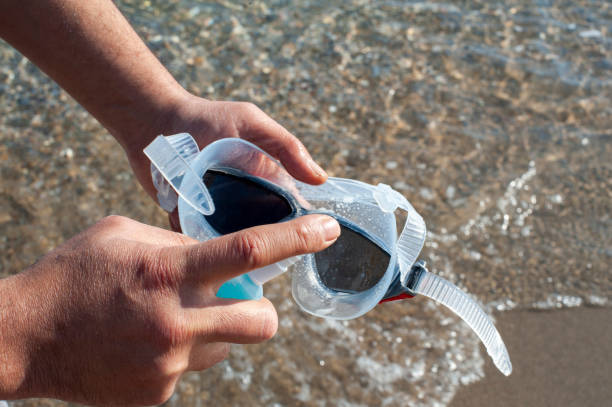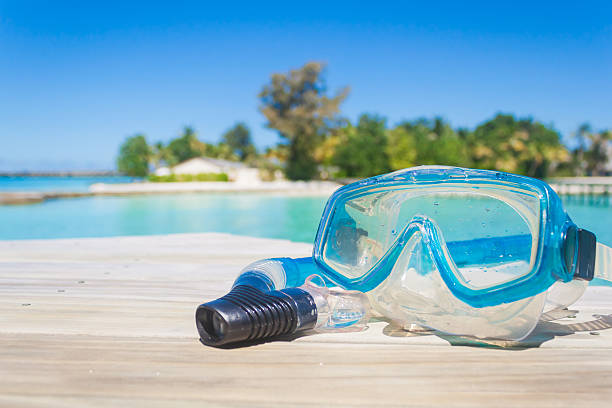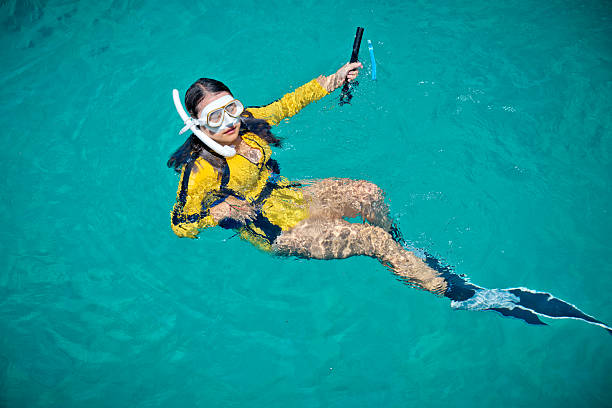खुले पानी में तैराकी के भाग में आपका स्वागत है! शुरुआती लोगों को मार्गदर्शन देने में अनुभवी व्यक्ति के रूप में, हम इस रोमांचक खेल में गोता लगाने के साथ आने वाले उत्साह और अनिश्चितता को समझते हैं। इस गाइड में, हम आपको खुले पानी में तैराकी करने वाले शुरुआती लोगों के लिए सबसे अच्छा वेटसूट चुनने में मदद करेंगे। हमारी दोस्ताना और सुलभ सलाह आपके आत्मविश्वास को बढ़ाएगी और आपको आपके जलीय रोमांच के लिए तैयार करेगी। चाहे आप शब्दावली के माध्यम से नेविगेट कर रहे हों या सही फिट खोजने के लिए सुझाव मांग रहे हों, मुझे अपना भरोसेमंद साथी मानें क्योंकि हम इस यात्रा पर एक साथ चलते हैं। आइए गोता लगाएँ और अपने खुले पानी में तैराकी के प्रयासों के लिए सबसे अच्छा वेटसूट खोजें!
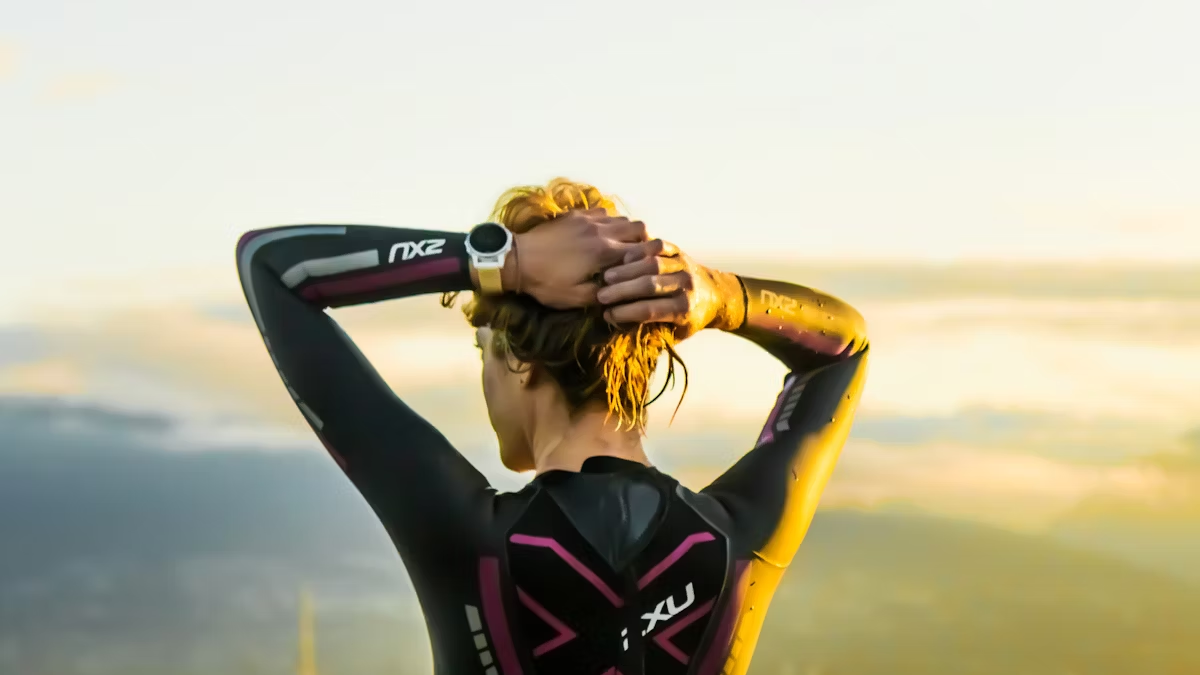
फिट रहना सबसे पहले आता है
सर्वोत्तम स्विमरन वेटसूट जो आपको पूरी तरह से फिट होते हैं, आपके आराम को बढ़ा सकते हैं और पानी में आपके प्रदर्शन को महत्वपूर्ण रूप से प्रभावित कर सकते हैं।
सही फिट सुनिश्चित करने के लिए सुझाव
- खरीदने के पहले आज़माएं: खरीदारी करने से पहले, अलग-अलग वेटसूट पहनकर देखना उचित है कि वे आपके शरीर पर कैसा महसूस कराते हैं। आराम और लचीलेपन का आकलन करने के लिए घूमें, स्ट्रेच करें और तैराकी की हरकतें करें।
- गति की सीमा की जाँच करेंसुनिश्चित करें कि वेटसूट पहनते समय आपके हाथ और पैर पूरी तरह से हरकत कर सकें। आपकी हरकतें किसी भी तरह से प्रतिबंधित या बाधित नहीं होनी चाहिए।
- सील जाँचगर्दन, कलाई और टखनों के आस-पास की सील पर ध्यान दें। इन क्षेत्रों में असुविधा या कसाव पैदा किए बिना एक आरामदायक सील बननी चाहिए।
- पेशेवर सलाह लेंयदि आप आकार या फिटिंग के बारे में अनिश्चित हैं, तो तैराकी की दुकानों या जलीय गियर में विशेषज्ञता रखने वाले खेल की दुकानों पर विशेषज्ञों से सलाह लेने में संकोच न करें।
परफेक्ट फिट पर कोई समझौता क्यों नहीं किया जा सकता
एक खराब फिटिंग वाला वेटसूट प्रतिबंधित गतिविधियों और असुविधा का कारण बन सकता है, जिससे आपकी कुशलता से तैरने की क्षमता में बाधा उत्पन्न हो सकती है। कल्पना करें कि एक सूट के साथ पानी के माध्यम से सरकने की कोशिश करना जो कंधों के चारों ओर बहुत तंग है या धड़ के चारों ओर बहुत ढीला है - यह एक धारा के खिलाफ तैरने जैसा होगा।
शोध से पता चला है कि उचित रूप से फिट किया गया वेटसूट पहनने से आपकी तैराकी क्षमता में सुधार हो सकता है। 3-5% गलत साइज़ का जूता पहनने की तुलना में। प्रदर्शन में यह वृद्धि इष्टतम जूता पहनने के कारण है। गति की सीमा एक अच्छी तरह से फिट किए गए सूट द्वारा, आप पानी के माध्यम से अधिक स्वतंत्रता और शक्तिशाली रूप से आगे बढ़ने में सक्षम होते हैं।
यह सुनिश्चित करने के लिए कि आपको सही फिट मिले, वेटसूट चुनते समय अपनी ऊंचाई, वजन और छाती के माप जैसे कारकों पर विचार करें। कई ब्रांड आकार चार्ट प्रदान करते हैं जो इन मापों के आधार पर उचित आकार चुनने पर मार्गदर्शन प्रदान करते हैं। इन चार्टों से परामर्श करने से आपको एक ऐसा वेटसूट खोजने में मदद मिल सकती है जो आपके शरीर को बिना जकड़े आराम से गले लगाता है।
जानें आपको किस कवरेज की आवश्यकता है
अपने खुले पानी में तैराकी के प्रयासों के लिए आदर्श गियर का चयन करने से पहले, आपको वेटसूट में उपलब्ध विभिन्न कवरेज विकल्पों के बारे में जानना चाहिए। प्रत्येक प्रकार का कवरेज विभिन्न तैराकी स्थितियों और व्यक्तिगत प्राथमिकताओं के अनुरूप अद्वितीय लाभ प्रदान करता है।
पूर्ण लंबाई
ए पूर्ण लंबाई वाला वेटसूट गर्दन से लेकर टखनों तक व्यापक कवरेज प्रदान करता है, जो ठंडे पानी और संभावित घर्षण से अधिकतम सुरक्षा प्रदान करता है। ठंडे पानी में तैरने के लिए सबसे अच्छे वेटसूट के रूप में, यह शैली उन तैराकों द्वारा पसंद की जाती है जो बढ़ी हुई गर्मी और आराम की तलाश में हैं। उछाल लंबी तैराकी के दौरान। शोध अध्ययनों से पता चला है कि पूरे शरीर वाला वेटसूट पहनने से गति में महत्वपूर्ण सुधार हो सकता है 3.2% से 12.9% विभिन्न दूरियों और अवधियों में तैराकी के लिए उपयुक्त, यह प्रदर्शन में सुधार चाहने वाले प्रतिस्पर्धी तैराकों के लिए एक लोकप्रिय विकल्प है।
स्प्रिंग/शॉर्टी
स्पेक्ट्रम के दूसरे छोर पर, स्प्रिंग/शॉर्टी वेटसूट इसमें छोटे पैर और आस्तीन होते हैं, जो मध्यम पानी के तापमान के लिए थर्मल इन्सुलेशन प्रदान करते हुए भी कम कवरेज प्रदान करते हैं। इस प्रकार का वेटसूट पूर्ण लंबाई वाले सूट की तुलना में आंदोलन की अधिक स्वतंत्रता की अनुमति देता है, जो इसे उन तैराकों के लिए उपयुक्त बनाता है जो अपने स्ट्रोक में चपलता और लचीलेपन को प्राथमिकता देते हैं। एंडी, जो खुले पानी में तैराकी के विशेषज्ञ हैं, दौड़ के दौरान आंदोलन की एक अच्छी सीमा बनाए रखने के महत्व पर जोर देते हैं, वेटसूट डिजाइन में लचीलेपन के मूल्य पर प्रकाश डालते हैं।
लघु आस्तीन रहित
न्यूनतम कवरेज और अधिकतम गतिशीलता चाहने वाले तैराकों के लिए, छोटी आस्तीन वाला वेटसूट यह एक बेहतरीन विकल्प है। यह स्टाइल हाथों को बिना किसी प्रतिबंध के पूरी तरह से मुक्त रखता है और कोर को गर्माहट और उछाल प्रदान करता है। अध्ययनों से पता चला है कि स्लीवलेस वेटसूट पहनने से तैराकी प्रदर्शन से संबंधित बायोमैकेनिकल चर पर सकारात्मक प्रभाव पड़ सकता है, जिससे पानी में दक्षता बढ़ जाती है।
बिना आस्तीन
स्लीवलेस स्विमसूट एक बहुमुखी विकल्प के रूप में सामने आता है जो खुले पानी में तैराकी के लिए आंदोलन की स्वतंत्रता और आवश्यक कोर गर्मी दोनों प्रदान करता है। यह शैली उन तैराकों द्वारा पसंद की जाती है जो अपनी जलीय गतिविधियों के दौरान चपलता और अप्रतिबंधित हाथ की गति को प्राथमिकता देते हैं।
विशेषज्ञ ANDYखुले पानी और पूल में तैराकी में अपनी विशेषज्ञता के लिए जाने जाने वाले, विशेष रूप से दौड़ के अंतिम चरणों के दौरान, गति और उछाल की एक अच्छी रेंज बनाए रखने के महत्व पर जोर देते हैं। एक स्लीवलेस वेटसूट तैराकों को आस्तीन से किसी भी बाधा के बिना पानी के माध्यम से कुशलतापूर्वक आगे बढ़ने की अनुमति देता है, जिससे उन्हें इष्टतम स्ट्रोक यांत्रिकी और गति बनाए रखने में मदद मिलती है।
उसी तरह से, अध्ययनों से पता चला है बिना आस्तीन के वेटसूट पहनने से तैराकी प्रदर्शन से संबंधित बायोमैकेनिकल चर पर सकारात्मक प्रभाव पड़ सकता है। बाहों को पूरी तरह से मुक्त करके, यह शैली एक प्राकृतिक तैराकी स्ट्रोक को बढ़ावा देती है और पानी में समग्र दक्षता को बढ़ाती है। खुले पानी की घटनाओं में अपने समय और धीरज को बेहतर बनाने की चाह रखने वाले तैराकों के लिए बिना किसी बाधा के आगे बढ़ने की क्षमता महत्वपूर्ण है।
वेटसूट सामग्री महत्वपूर्ण है
जब चयन की बात आती है सबसे अच्छा वेटसूट आपके खुले पानी में तैराकी के भ्रमण के लिए, वेटसूट निर्माण में उपयोग की जाने वाली सामग्रियों को समझना महत्वपूर्ण है। अधिकांश वेटसूट की नींव के रूप में काम करने वाली प्राथमिक सामग्री है नियोप्रिन, एक सिंथेटिक रबर जो अपने इन्सुलेटिंग गुणों और लचीलेपन के लिए जाना जाता है।
वेटसूट की सामग्री आपके गियर के आराम, प्रदर्शन और स्थायित्व के लिए महत्वपूर्ण है। अधिकांश वेटसूट की नींव के रूप में काम करने वाली प्राथमिक सामग्री नियोप्रीन है, जो एक सिंथेटिक रबर है जो अपने इन्सुलेटिंग गुणों और लचीलेपन के लिए जाना जाता है।
नियोप्रीन: आपके वेटसूट का दिल
नियोप्रीन आधुनिक वेटसूट की आधारशिला है क्योंकि यह पानी में लचीला रहते हुए थर्मल इन्सुलेशन प्रदान करता है। यह सामग्री आपके शरीर और सूट के बीच पानी की एक पतली परत को फंसाती है, जो आपके शरीर के तापमान से गर्म हो जाती है, जिससे बाहर के ठंडे पानी के खिलाफ एक अवरोध पैदा होता है। नियोप्रीन स्विमसूट इसकी गर्मी और उछाल के स्तर को निर्धारित करता है, जो आपकी ज़रूरतों के लिए सही सूट चुनने में एक महत्वपूर्ण कारक है। यही कारण है कि एक फुल-बॉडी वेटसूट विभिन्न दूरियों और अवधियों में तैराकी के प्रदर्शन को 3.2-12.9% तक बढ़ा सकता है।
नियोप्रीन: लचीलापन और स्थायित्व
इन्सुलेशन प्रदान करने के अलावा, नियोप्रीन वेटसूट के लचीलेपन और स्थायित्व को निर्धारित करने में महत्वपूर्ण भूमिका निभाता है। तैराकी प्रदर्शन और वेटसूट प्रभावों के बारे में एक कथात्मक समीक्षा ने इस बात पर प्रकाश डाला कि पारंपरिक स्विमसूट की तुलना में, वेटसूट पहनने से तैराकी प्रदर्शन 3%–10% तक बढ़ सकता है। प्रदर्शन में यह वृद्धि नियोप्रीन के लचीलेपन के कारण है, जो तैराकों को उनके स्ट्रोक के दौरान इष्टतम आंदोलनों को प्राप्त करने में सहायता करता है और पानी के माध्यम से प्राकृतिक स्ट्रोक यांत्रिकी और कुशल प्रणोदन को सक्षम बनाता है।
इसके अलावा, तैराकी नियोप्रीन सूट समय के साथ अपनी कार्यक्षमता से समझौता किए बिना खुले पानी में तैराकी की कठोरता का सामना करता है। उच्च गुणवत्ता वाला नियोप्रीन बार-बार उपयोग के माध्यम से अपने आकार और अखंडता को बनाए रखते हुए घर्षण और फटने का प्रतिरोध करता है।
तैराकी उपकरण के साथ संयोजन करें
खुले पानी में तैराकी के लिए तैयार होते समय, यह विचार करना आवश्यक है कि आपका वेटसूट अन्य तैराकी उपकरणों के साथ किस प्रकार मेल खाता है, ताकि पानी में आपका प्रदर्शन और आराम बेहतर हो सके।
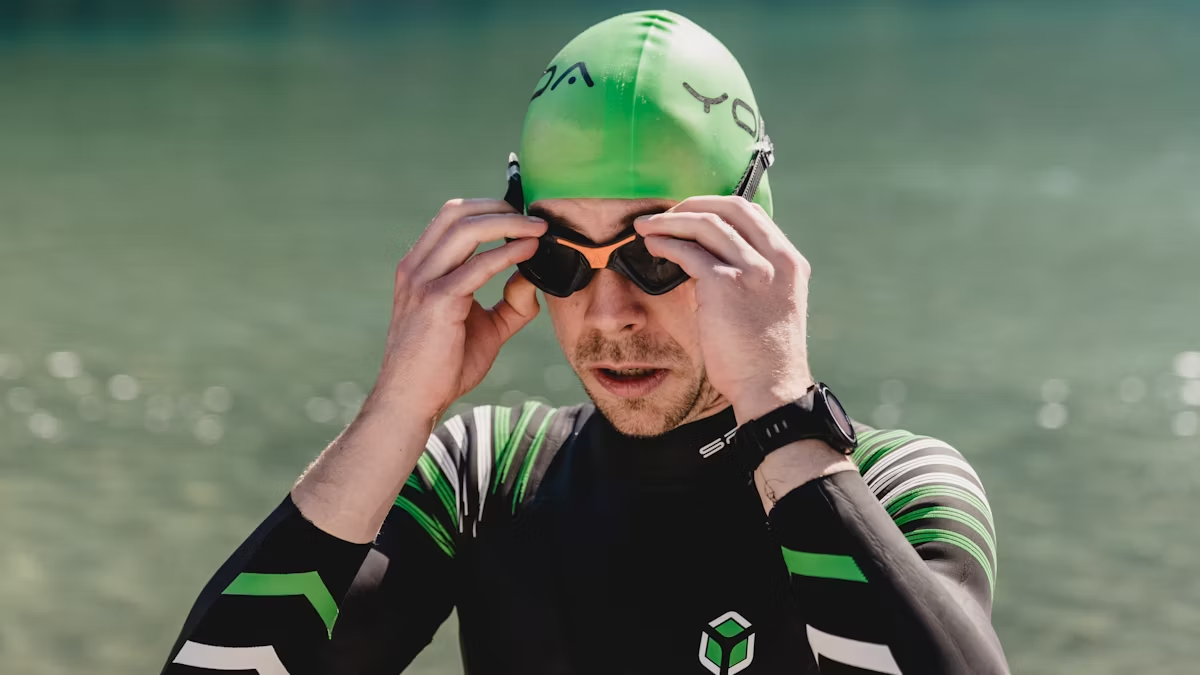
बेहतर प्रदर्शन के लिए आवश्यक उपकरण
आवश्यक तैराकी सहायक उपकरण अपने वेटसूट के साथ एक व्यापक पहनावा बनाएं जो खुले पानी के सत्रों के दौरान प्रदर्शन वृद्धि और आराम का समर्थन करता है। प्रत्येक गियर जलीय वातावरण में आने वाली विशिष्ट चुनौतियों का समाधान करके आपके तैराकी अनुभव को अनुकूलित करने में महत्वपूर्ण है।
- तैरना का काले चश्म: तैरना का काले चश्म आपकी आंखों को परेशानियों से बचाएं और पानी के नीचे दृश्यता बढ़ाएं, जिससे आप स्पष्टता के साथ विभिन्न स्थितियों में नेविगेट कर सकें।
- तैराकी हेतु कैप: एक अच्छी तरह से फिट तैराकी हेतु कैप यह घर्षण को कम करता है, बालों को आपके चेहरे से दूर रखता है, तथा इन्सुलेशन प्रदान करता है, सुव्यवस्थित गति और गर्मी प्रतिधारण को बढ़ावा देता है। एक आरामदायक टोपी पानी के माध्यम से सुव्यवस्थित गति सुनिश्चित करती है और सिर से गर्मी के नुकसान को कम करती है, विशेष रूप से ठंडे वातावरण में।
- इयरप्लग और नाक क्लिप: इयरप्लग और नाक क्लिप पानी को संवेदनशील क्षेत्रों में प्रवेश करने से रोकते हैं, जिससे लम्बी तैराकी के दौरान आराम और ध्यान में वृद्धि होती है।
- हाथ पैडल: हाथ के पैडल प्रतिरोध को बढ़ाते हैं, शरीर के ऊपरी हिस्से की मांसपेशियों को मजबूत करते हैं, तथा स्ट्रोक यांत्रिकी में सुधार करते हैं, जिससे प्रणोदन और तकनीक में सुधार में सहायता मिलती है।
- पंख: पंख अतिरिक्त प्रणोदन और स्थिरता प्रदान करते हैं, पैर की ताकत और किक दक्षता विकसित करने में मदद करते हैं, और पानी में शरीर का उचित संरेखण बनाए रखते हैं।
अपने वेटसूट को अन्य उपकरणों से मिलाएं
आपके वेटसूट और अन्य तैराकी उपकरणों के बीच अनुकूलता एक निर्बाध जलीय प्रदर्शन प्राप्त करने के लिए महत्वपूर्ण है। सामग्री संगतता, फिट स्थिरता, और एर्गोनोमिक डिज़ाइन आपके वेटसूट के पूरक के लिए गियर चुनने में 3 प्रमुख कारक हैं।
उदाहरण के लिए, समायोज्य पट्टियों वाले चश्मे चुनना जो आपके वेटसूट की नियोप्रीन सामग्री पर आराम से फिट होते हैं, लंबे समय तक तैरने के दौरान फिसलन या असुविधा को रोकते हैं। सिलिकॉन-आधारित कैप्स का चयन करना जो वेटसूट की सतह पर एक सुरक्षित पकड़ प्रदान करते हैं, फिट या इन्सुलेशन से समझौता किए बिना सुव्यवस्थित हाइड्रोडायनामिक्स को बनाए रखने में मदद करते हैं। हाथ के पैडल या पंखों के लिए समायोज्य पट्टियाँ और आकार जैसी सुविधाएँ देखें जो गतिशीलता या लचीलेपन में बाधा डाले बिना इष्टतम प्रदर्शन लाभ सुनिश्चित करते हुए नियोप्रीन की अलग-अलग मोटाई को समायोजित करते हैं।
पानी का तापमान आंकलन करें
आरामदायक और कुशल अनुभव के लिए वेटसूट में पानी का तापमान चुनना महत्वपूर्ण है। अलग-अलग जल तापमानों के लिए इन्सुलेशन और उछाल के अलग-अलग स्तरों की आवश्यकता होती है जलीय वातावरण में अपने प्रदर्शन को अनुकूलित करने के लिए।
अलग-अलग तापमान के लिए सही वेटसूट चुनें
विशिष्ट जल तापमान के अनुरूप बनाया गया उपयुक्त वेटसूट ड्रैग को कम करके, उछाल में सुधार करके और तकनीक को बेहतर बनाकर तैराकी प्रदर्शन को महत्वपूर्ण रूप से प्रभावित कर सकता है। अपने गियर को उन पर्यावरणीय परिस्थितियों के साथ संरेखित करके जिनका आप सामना करेंगे, आप विभिन्न सेटिंग्स में खुले पानी में तैराकी के रोमांच में सफलता के लिए खुद को तैयार करते हैं।
ठंडे पानी में, एक मोटा लंबी आस्तीन वाला नियोप्रीन स्विमसूट शरीर की गर्मी को बनाए रखने और हाइपोथर्मिया को रोकने के लिए बेहतर इन्सुलेशन प्रदान करता है। इसकी अतिरिक्त उछाल तैरने में सहायता करती है, ऊर्जा व्यय को कम करती है और समग्र तैराकी दक्षता में सुधार करती है।
इसके विपरीत, जब गर्म पानी का सामना करना पड़ता है, तो पतले वेटसूट या रणनीतिक पैनल निर्माण वाले वेटसूट का चयन करना बेहतर गर्मी अपव्यय की अनुमति देता है जबकि बाहरी तत्वों के खिलाफ सुरक्षा भी प्रदान करता है। तैराकी के लिए हल्का वेटसूट आंदोलन की स्वतंत्रता को बढ़ावा देता है और अधिक गर्मी को रोकता है, यह सुनिश्चित करता है कि आप अत्यधिक इन्सुलेशन द्वारा प्रतिबंधित महसूस किए बिना अपने स्ट्रोक पर ध्यान केंद्रित कर सकते हैं।
मोटाई और उछाल मायने रखता है
मोटाई और उछाल आपके जलीय अनुभव को बढ़ा सकते हैं, इसलिए आपको अपने जलीय प्रयासों के लिए आदर्श वेटसूट का चयन करते समय गर्मी प्रतिधारण और आंदोलन की स्वतंत्रता के बीच सामंजस्यपूर्ण संतुलन बनाना चाहिए।
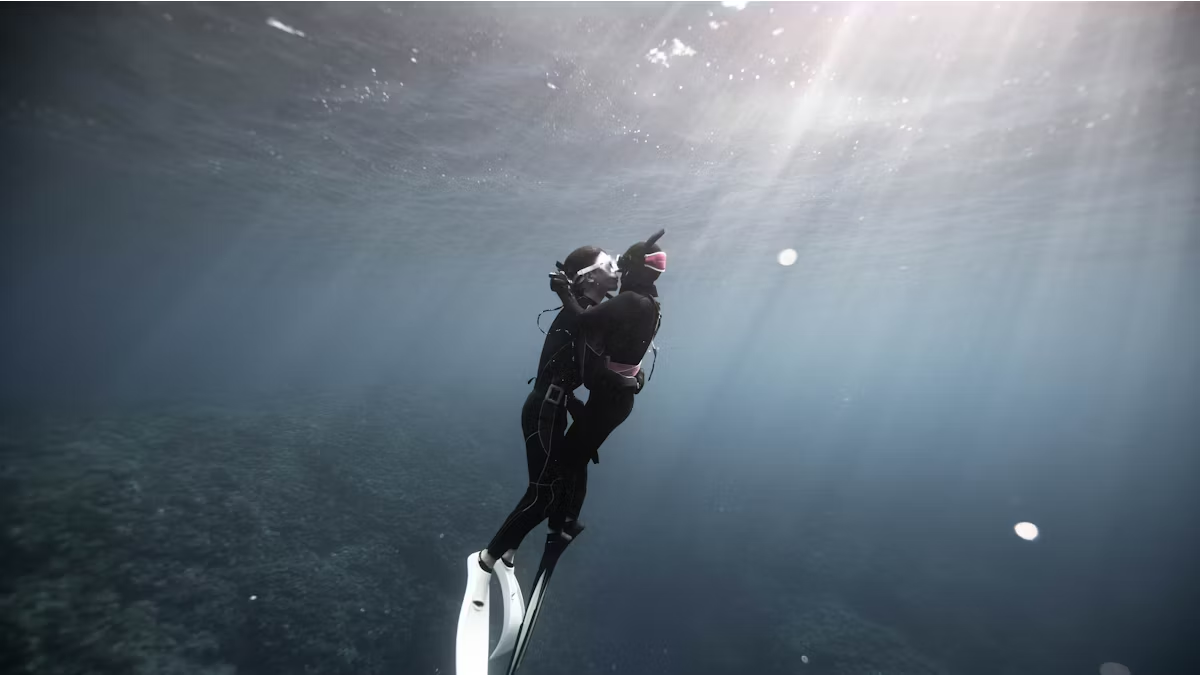
एक तरफ, वेटसूट की मोटाई उसके उत्प्लावन गुणों को महत्वपूर्ण रूप से प्रभावित करती है, जिससे यह प्रभावित होता है कि आप पानी में कैसे आगे बढ़ते हैं और बाहरी ताकतों के साथ कैसे बातचीत करते हैं। दूसरी ओर, उत्प्लावन आपके शरीर की स्थिति और पानी में स्ट्रोक दक्षता के साथ-साथ समग्र हाइड्रोडायनामिक्स को भी प्रभावित करता है।
मोटी नियोप्रीन परतें स्वाभाविक रूप से अपने बढ़े हुए घनत्व और सामग्री के भीतर अधिक हवा को फंसाने की क्षमता के कारण अधिक उछाल प्रदान करती हैं। यह अतिरिक्त उछाल तैराकों को न्यूनतम प्रयास के साथ तैरने में मदद करता है जबकि सुव्यवस्थित प्रणोदन के लिए उचित शरीर संरेखण को बढ़ावा देता है। शरीर के कुछ हिस्सों को पानी में ऊपर उठाकर, मोटे वेटसूट ड्रैग प्रतिरोध को कम करने और तैरने की गति को अनुकूलित करने में सहायता कर सकते हैं।
इसके विपरीत, पतले वेटसूट कम अंतर्निहित उछाल प्रदान करते हैं लेकिन अत्यधिक प्रतिबंधात्मक या बोझिल महसूस किए बिना प्राकृतिक आंदोलनों को सुविधाजनक बनाने में उत्कृष्ट होते हैं। तैराक जो अतिरिक्त फ्लोटेशन पर चपलता को प्राथमिकता देते हैं, वे अक्सर तरल स्ट्रोक यांत्रिकी और विभिन्न तैराकी तकनीकों के बीच तेजी से बदलाव बनाए रखने के लिए पतले सूट का विकल्प चुनते हैं।
एक उछालयुक्त वेटसूट प्राप्त करें, आप खुले पानी में तैराकी के रोमांच के दौरान प्रदर्शन लक्ष्यों को प्राप्त कर सकते हैं।
सीम निर्माण स्थायित्व सुनिश्चित करता है
वेटसूट की सीम इसकी संरचनात्मक अखंडता और दीर्घायु को बनाए रखने में महत्वपूर्ण भूमिका निभाती है, खासकर चुनौतीपूर्ण जलीय वातावरण में। विभिन्न टिकाऊ सीम निर्माणों के साथ वेटसूट सीखकर, आप यह सुनिश्चित कर सकते हैं कि आपका गियर आराम या कार्यक्षमता से समझौता किए बिना कठोर उपयोग का सामना कर सके।
सीम के प्रकार और उनके लाभ
फ्लैटलॉक सीम
ये सीम त्वचा पर सपाट रहने के लिए डिज़ाइन किए गए हैं, जिससे लंबे समय तक तैरने के दौरान घर्षण और जलन कम होती है। फ़्लैटलॉक सीम का इस्तेमाल आमतौर पर पतले वेटसूट या गर्म पानी के लिए बनाए गए वेटसूट में किया जाता है, जहाँ इन्सुलेशन प्राथमिक चिंता का विषय नहीं होता है। जबकि वे लचीलापन और आराम प्रदान करते हैं, वे अन्य सीम प्रकारों की तुलना में पानी के प्रवेश को रोकने में कम प्रभावी हो सकते हैं।
चिपके हुए और ब्लाइंड सिले हुए सीम
इस सीम निर्माण विधि में नियोप्रीन पैनलों को अंदर से आंशिक रूप से सिलाई करने से पहले एक साथ चिपकाना शामिल है। बाहरी सिलाई पूरी सामग्री में प्रवेश नहीं करती है, जिससे पानी का प्रवेश कम होता है और स्थायित्व बढ़ता है। आम तौर पर, यह उत्कृष्ट इन्सुलेशन और संरचनात्मक सुदृढ़ीकरण प्रदान करता है, जिससे यह ठंडे पानी की स्थितियों के लिए उपयुक्त हो जाता है।
टेप की गई सीवनें
टेप किए गए सीम निर्माण में, पानी के प्रवेश को रोकने और नियोप्रीन पैनलों के बीच बंधन को मजबूत करने के लिए सीम पर वाटरप्रूफ टेप लगाया जाता है। यह सीलिंग तकनीक वेटसूट के वाटरप्रूफ गुणों को बढ़ाती है जबकि इसके पहनने और फटने के प्रतिरोध को बढ़ाती है। टेप किए गए सीम आमतौर पर प्रतिस्पर्धी तैराकी या चरम स्थितियों के लिए डिज़ाइन किए गए उच्च-प्रदर्शन वाले वेटसूट में पाए जाते हैं जहाँ अधिकतम स्थायित्व आवश्यक है।
तरल सीम सीलेंट
कुछ उन्नत वेटसूट में पानी के प्रवेश और घर्षण के खिलाफ अतिरिक्त सुरक्षा के लिए सीम पर तरल सीम सीलेंट लगाया जाता है। यह अभिनव सीलिंग विधि एक जलरोधी अवरोध बनाती है जो पानी में अप्रतिबंधित गति के लिए लचीलापन बनाए रखते हुए वेटसूट की समग्र अखंडता को बढ़ाती है। लिक्विड सीम सीलेंट तकनीक वाले वेटसूट बेहतर रिसाव रोकथाम और लंबे समय तक चलने वाले प्रदर्शन लाभ प्रदान करते हैं।
स्थायित्व क्यों मायने रखता है
आपके वेटसूट की टिकाऊपन सीधे तौर पर इसके प्रदर्शन, दीर्घायु और खुले पानी की गतिविधियों के लिए तैराकी गियर के एक आवश्यक हिस्से के रूप में इसके समग्र मूल्य को प्रभावित करती है। एक टिकाऊ वेटसूट में निवेश करने से कई प्रमुख लाभ मिलते हैं जो आपके तैराकी अनुभव को बढ़ाते हैं:
- दीर्घायु: मजबूत सीम निर्माण विधियां विभिन्न जलीय परिस्थितियों में लगातार उपयोग के बिना आसानी से घिसाव या क्षति के बिना टिक सकती हैं।
- प्रदर्शन स्थिरता: मजबूत सीम वाले वेटसूट कठिन परिस्थितियों में भी अपनी संरचनात्मक अखंडता बनाए रखते हैं, जिससे आप समझौता किए गए गियर के कारण होने वाली परेशानी या परेशानी के बिना अपनी तैराकी तकनीक पर ध्यान केंद्रित कर सकते हैं।
- तत्वों के विरुद्ध सुरक्षा: टेप किए गए सीम या लिक्विड सीलेंट जैसे टिकाऊ सीम निर्माण अवरोध पैदा करते हैं जो ठंडे पानी को सूट में रिसने से रोकते हैं, जिससे आप तैराकी के दौरान गर्म और आरामदायक महसूस करते हैं। हवा, लहरों और मलबे जैसे बाहरी तत्वों के खिलाफ बढ़ी हुई सुरक्षा सुनिश्चित करती है कि आप बिना किसी व्यवधान के अपने जलीय गतिविधियों में पूरी तरह से डूब सकते हैं।
- लागत प्रभावशीलता: हालांकि टिकाऊ वेटसूट की कीमत शुरू में थोड़ी अधिक हो सकती है, लेकिन उनकी दीर्घकालिक विश्वसनीयता अंततः समय से पहले खराब होने के कारण बार-बार बदलने की आवश्यकता को कम करके आपके पैसे बचाती है।
जिपर के प्रकार पर विचार करें
जिप वेटसूट को पहनना या उतारना आसान है, लेकिन अलग-अलग जिप वेटसूट के विभिन्न कार्य होते हैं। पीछे और सामने ज़िप वाला वेटसूट बाजार में दो आम प्रकार हैं। जबकि दोनों डिज़ाइन अलग-अलग ज़रूरतों के हिसाब से अद्वितीय लाभ प्रदान करते हैं, आपकी प्राथमिकताओं का आकलन करने से यह निर्धारित करने में मदद मिल सकती है कि कौन सा प्रकार आपके तैराकी लक्ष्यों के साथ सबसे अच्छा संरेखित है:
- उपयोग में आसानी: यदि आप त्वरित ड्रेसिंग प्रक्रिया और स्वतंत्र गियर समायोजन को महत्व देते हैं, तो बैक जिप वेटसूट अपनी सीधी प्रवेश विधि और पीछे की ओर चौड़े उद्घाटन के कारण अधिक उपयुक्त हो सकता है।
- सुरक्षा: पानी के प्रवेश के विरुद्ध बढ़ी हुई सुरक्षा और गतिशीलता से समझौता किए बिना इष्टतम आराम चाहने वाले तैराकों के लिए, सामने की ओर ज़िप वाला वेटसूट, छाती क्षेत्र में सुरक्षित बंद करने की प्रणाली के साथ अधिक मानसिक शांति प्रदान कर सकता है।
इन दो स्विमसूट के बारे में और अधिक जानने के लिए कृपया अभी पढ़ें!
बैक ज़िप वेटसूट्स
इसमें सूट के पीछे एक ज़िपर लगा होता है, जिसे आम तौर पर दूसरों की सहायता के बिना आसानी से खोलने और बंद करने के लिए एक लंबी पुल कॉर्ड से सुरक्षित किया जाता है। ये वेटसूट प्रवेश और निकास में उनकी सरलता के लिए पसंद किए जाते हैं, जो उन्हें शुरुआती लोगों या उन लोगों के लिए आदर्श बनाते हैं जो सीधी ड्रेसिंग प्रक्रिया पसंद करते हैं।
लाभ:
- पहनने में आसान
- त्वरित निष्कासन की सुविधा देता है
- छाती पर दबाव कम करता है
- कम महंगा
दोष:
- ज़िपर के माध्यम से पानी के प्रवेश की अधिक संभावना
- पीछे की ज़िपर से पानी निकलने का कारण हो सकता है
- पीठ पर असुविधा या घर्षण पैदा हो सकता है
- सीमित वेंटिलेशन विकल्प
फ्रंट ज़िप वेटसूट्स
इसके विपरीत, फ्रंट ज़िप वेटसूट में छाती क्षेत्र में स्थित एक ज़िपर होता है, जो सूट के सामने से आसानी से प्रवेश करने की अनुमति देता है। यह डिज़ाइन सक्रिय तैराकी सत्रों के दौरान ज़िपर के माध्यम से पानी के प्रवेश को कम करने के मामले में लाभ प्रदान करता है क्योंकि पीछे के ज़िप की तुलना में सामने के ज़िप में आकस्मिक खुलने या अंतराल होने की संभावना कम होती है। बढ़ी हुई सुरक्षा और कम फ्लशिंग जोखिमों पर ध्यान केंद्रित करने वाले तैराक अक्सर मन की अतिरिक्त शांति के लिए फ्रंट ज़िप वेटसूट का विकल्प चुनते हैं।
पीआरओएस:
- पानी के प्रवेश के विरुद्ध बेहतर सीलिंग
- जिपर के माध्यम से पानी का कम बहना
- गर्दन के चारों ओर अधिक आरामदायक फिट
- वेंटिलेशन के लिए छाती तक आसान पहुंच
सीपरएस:
- इसे पहनना थोड़ा अधिक चुनौतीपूर्ण है
- ज़िपर बंद करते समय गति की सीमित सीमा
- बैक ज़िप वेटसूट की तुलना में अधिक महंगा
- ज़िपर की स्थिति से गतिविधि में बाधा आ सकती है
विश्वसनीय ब्रांड से खरीदें
आपके द्वारा चुना गया ब्रांड न केवल वेटसूट की गुणवत्ता को दर्शाता है बल्कि स्थायित्व, प्रदर्शन और ग्राहक सहायता जैसे कारकों को भी प्रभावित करता है। सकारात्मक समीक्षा और नवाचार के इतिहास वाले स्थापित ब्रांड बेहतर शिल्प कौशल और विवरण पर ध्यान देने का संकेत देते हैं। आप उन पर भरोसा करने के लिए गुणवत्ता के संकेतकों की तलाश कर सकते हैं:
- उन्नत प्रौद्योगिकी
- प्रीमियम सामग्री
- पेशेवर एथलीटों या तैराकी विशेषज्ञों से समर्थन
इसके अलावा, प्रतिष्ठित ब्रांड पर्यावरण के अनुकूल सामग्रियों और नैतिक उत्पादन विधियों का उपयोग करके स्थिरता को प्राथमिकता देते हैं ताकि पर्यावरणीय प्रभाव को कम किया जा सके। पुनर्चक्रित वेटसूट जलीय खेल उद्योग के भीतर जिम्मेदार उपभोग को बढ़ावा देता है।
इसके अलावा, विश्वसनीय ब्रांड सामान्य उपयोग की स्थितियों में विनिर्माण दोषों या समय से पहले खराब होने से सुरक्षा के लिए व्यापक वारंटी प्रदान करते हैं। खरीदारी से पहले, निम्नलिखित कारकों को याद रखें ताकि यह सुनिश्चित हो सके कि कवर की गई अवधि के दौरान समस्या होने पर आप सहायता या प्रतिस्थापन मांग सकते हैं।
- वारंटी अवधि
- कवरेज विवरण
- वैधता बनाए रखने के लिए किसी विशिष्ट देखभाल निर्देश की आवश्यकता है
- उत्पाद विनिमय नीतियां
- वापसी प्रक्रिया
- आकार निर्धारण मार्गदर्शन
- सामान्य पूछताछ प्रबंधन
इसके अलावा, आप प्रदान की गई सहायता के स्तर को मापने के लिए ब्रांड की ग्राहक सेवा टीम की प्रतिक्रियाशीलता और व्यावसायिकता का मूल्यांकन कर सकते हैं।
सामान्य प्रश्न
अपना वेटसूट कैसे पहनें?
अपने नियोप्रीन वन-पीस स्विमसूट को पहनने के लिए, इसे धीरे-धीरे अपने पैरों के ऊपर खींचकर शुरू करें, ताकि टखनों और घुटनों के आसपास यह अच्छी तरह से फिट हो जाए। फिर, सीम पर दबाव डालने से बचने के लिए धीरे-धीरे खींचने की गति का उपयोग करते हुए, वेटसूट को अपने धड़ के ऊपर सावधानी से खींचें। अंत में, वेटसूट के डिज़ाइन के अनुसार ज़िपर या क्लोजर मैकेनिज्म को सुरक्षित करें, ताकि पानी के प्रवेश के खिलाफ एक टाइट सील सुनिश्चित हो सके। पानी में जाने से पहले आराम और आंदोलन की स्वतंत्रता सुनिश्चित करने के लिए किसी भी नियोप्रीन पैनल या कफ को समायोजित करें।
क्या आपको वेटसूट पहनने से पहले भीगना चाहिए?
वेटसूट पहनने से पहले भीगना ज़रूरी नहीं है। वास्तव में, ज़्यादातर तैराक अपने वेटसूट को सूखने के बाद पहनना पसंद करते हैं ताकि यह सुनिश्चित हो सके कि यह त्वचा पर ठीक से फिट हो और सील हो। पहले से भीगने से सूट में आसानी से सरकना मुश्किल हो सकता है और तैराकी के दौरान आपको इंसुलेट करने और सुरक्षा देने में इसकी समग्र प्रभावशीलता प्रभावित हो सकती है।
क्या आप वेटसूट के साथ ब्रा पहनती हैं?
खुले पानी में तैराकी के लिए वेटसूट पहनते समय, नीचे ब्रा पहनने की कोई ज़रूरत नहीं होती। वेटसूट को पुरुषों और महिलाओं दोनों के लिए अतिरिक्त अंडरगारमेंट की आवश्यकता के बिना समर्थन और कवरेज प्रदान करने के लिए डिज़ाइन किया गया है। वेटसूट की नियोप्रीन सामग्री संपीड़न और सुरक्षा प्रदान करती है, जिससे अतिरिक्त परतों की आवश्यकता समाप्त हो जाती है जो तैराकी के दौरान आंदोलन में बाधा डाल सकती हैं या असुविधा पैदा कर सकती हैं।
